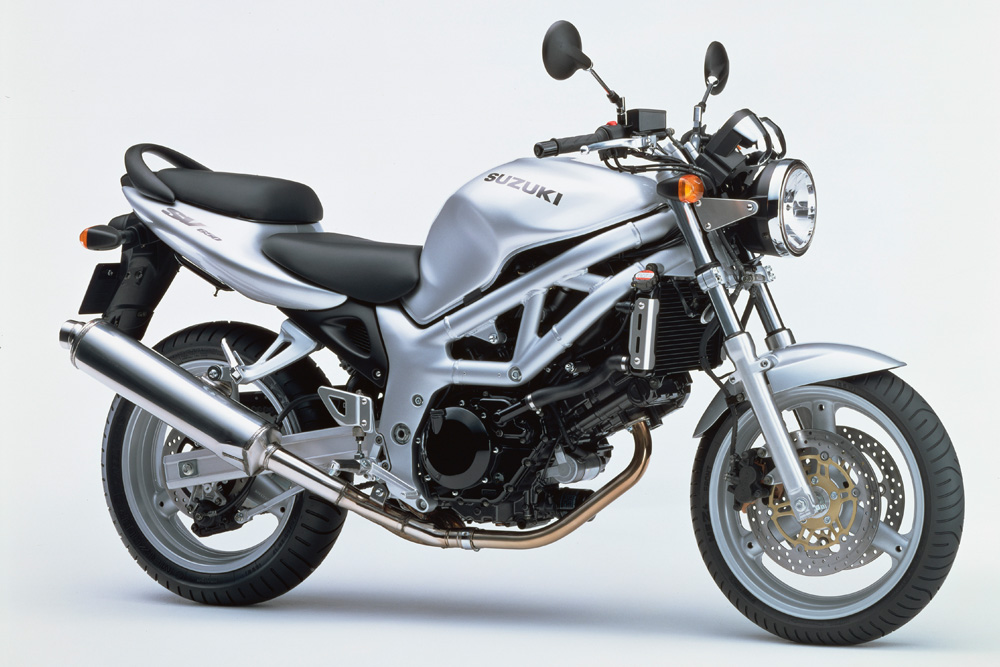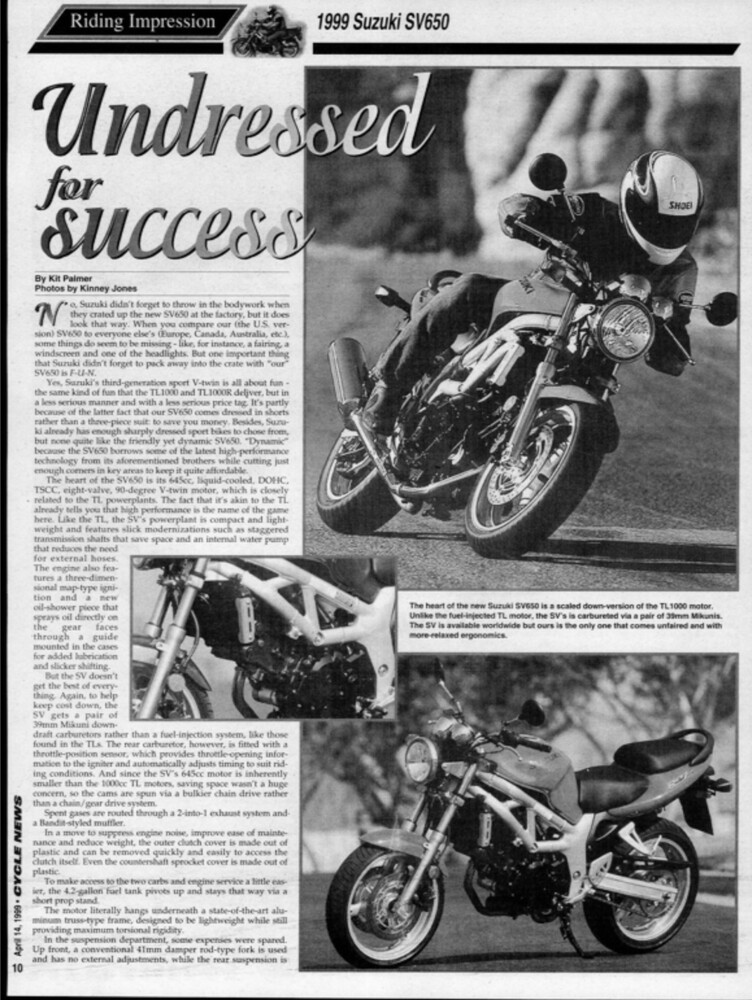| July 23, 2023
Cycle News Archives
COLUMN
Back To The Basics
By Kent Taylor
Every few years, it seems, the good people who design and build our motorcycles step back, take a deep breath, unplug their own internal processors and reboot the business of two-wheeled fun. The end result is a return to the primal machine, with fewer cylinders, less (or no) bodywork, reduced unsprung weight and hold the gadgets, please. Think of the Yamaha SR500, the Harley-Davidson 883, Ducati Monster and more recently, the Honda Grom. Less will be more and the companies gamble that riders who believe that motorcycles had become too complex, too heavy and maybe even too fast are going to love these new/old machines.

Some, like the Monster, were immediately welcomed with open arms, even becoming Ducati’s top-selling model of all time! Others, like the kickstart-only SR500, needed a stiff boot from the dealer in the form of deep discounts to keep them from wearing in a butt groove on the showroom floor.
In 1999, Suzuki decided that riders were ready for a break from the four-cylinder sport bike, which had become the flavor of the day. Engineers borrowed tech from their own TL1000 models, squished it into 643cc’s and the result was the SV650, released to a public that didn’t even know it wanted it. Yet!
“Suzuki’s third generation sport V-twin is all about fun,” gushed Cycle News in April, 1999. Lacking any fairing or bodywork, the little Suzuki was not only naked, it was also unashamed—and deservedly so, as its 363-pound dry weight was a whopping 80 pounds lighter than its four-cylinder, fully faired GSX-R brother, the Suzuki GSXR-600.
The aluminum trellis frame was not only a stunning departure from decades of cradle frames with front downtubes, it was also clearly a nod to the increasingly popular Ducati Monster, with its trademark (though, apparently, not trademarked) trellis frame. Truth be told, the SV was like a Ducati Monster for the masses! While the Italian company was still something of a boutique brand in the late ’90’s, Suzuki dealers were everywhere. Just like the Ducati Monster, owners could even prop up their fuel tanks with a small support rod, a bonus which made some maintenance chores less time-consuming.
There were many features on the SV650 that were mindful of the luddite design mentality. Twin 39mm Mikuni carburetors sent fuel and air into the engine, even though fuel injection was a feature on many models of that era. Conventional forks and rear suspension, with only limited adjustment available, were both consistent with the less-is-more approach and they served the SV well. It was only during aggressive canyon carving, Cycle News noted, that the budget suspension began to show that you get what you pay for: “You’ll start wishing for those damping adjustments that you don’t have.”
It was hard to argue with the results of Suzuki’s efforts, both on and off the spreadsheet. Certainly, when stacked up against its own GSX-R600, to the surprise of no one, the 600 out-performed the SV650. The inline four cranked out more than 100 horses, 30 more than the SV and its top speed of of 148 mph easily eclipsed the 650, which maxed out at 127 mph. Not a contest, but when one takes into consideration that the extra 21 mph would require two more cylinders, a massive amount of bodywork, all of which would add 80 pounds to the finished product, it becomes more difficult to declare a victor.
 The Cycle News editors were impressed with the first Suzuki SV650 in 1999.
The Cycle News editors were impressed with the first Suzuki SV650 in 1999.
But motorcycling isn’t a numbers racket anyway. The game is played on the street and that is where the SV was a winner. The 650 surprised the CN test crew with a torque curve that “surged forward, pulling hard yet steadily through all six gears…this 645cc motor…has plenty of gusto and delivers it in a way that only a V-twin can.”
“Railing the turns is one of the SV’s favorite things to do…” and the staff must’ve had a good time doing exactly that. “Having to muscle the SV through the switchbacks is not necessary, because the bike is willing to respond to whatever you tell it to do.”
Like its product, Suzuki also seemed to be responding to what its riders “told it to do.” It was amusing, yet telling, that the CN tester pointed out that the SV650 included such old-school niceties as rubber-covered footpegs! Also, they noted that the engineers positioned “the rearview mirrors to where they’re actually useful, [placed] the footpegs low enough on the frame to where your knees aren’t digging into your chest…designed a comfortable seat and…a fuel tank that holds plenty of gasoline.” Add to that a choke lever that was mounted right there on the handlebar and one can imagine a design team meeting where engineers were slapping their own foreheads all day long!
Suzuki couldn’t resist monkeying with the SV, gradually adding EFI, ABS and other nannies to the design. After a short run as the “Gladius,” the 650 also began wearing more bodywork, making the motorcycle much harder to distinguish from other sport bikes.
For 2023, however, the SV650 has returned to its roots, getting naked all over again! History repeats itself! A motorcycle that began its life with a goal of being “all about fun” has come full circle. May its tribe increase! CN